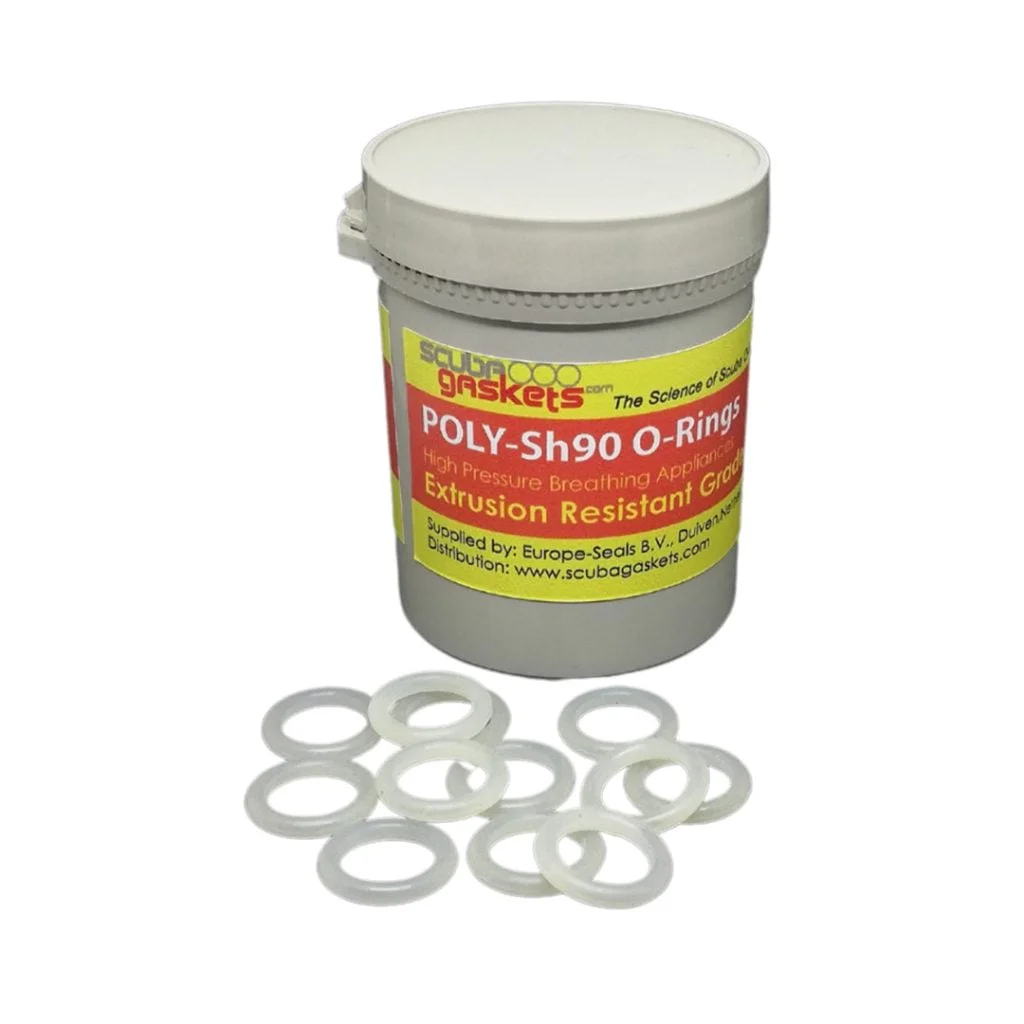THE SCIENCE OF SCUBA O-RINGS!
Scuba Gaskets O-Rings are Specifically Manufactured for Scuba Diving Applications. The biggest Scuba Diving O-ring product range Globally!
VITON ® Green O-rings for PURE O₂ Gas
This FPM / FKM fluoro rubber material was specially developed for pure oxygen applications that is carbon-free. In two different sh(75-90) this product range covers all low and high-pressure PURE oxygen applications of the scuba diving industry. Not all Viton are made equal!
EPDM O-rings
EPDM has excellent resistance to heat, water and steam, alkali, mild acidic and oxygenated solvents, ozone, and sunlight (UV). EPDM compounds are not recommended for gasoline, petroleum oil and grease, and hydrocarbon environments.
NBR - Nitrile O-rings
Nitrile /NBR is the most widely used elastomer in the seal industry today due to its excellent resistance to petroleum products, and temperature range -35°C to +120°C (-30°F to +250°F).
Not suitable for ozone, sunlight, or weather elements. Stored away from electric motors or ozone-generating equipment.
Sh90 is recommended for High-Pressure applications >100 bar, while Standard Grade sh70 <100bar..
Black Viton® O-rings for Nitrox
FKM elastomers have grown to major importance in the sealing industry. Due to its wide range of chemical compatibility, temperature range, low compression set, and excellent aging characteristics, FKM rubber is the most significant single elastomer developed in recent history. FKM elastomers are highly fluorinated polymer used in applications to resist harsh chemical and ozone attack sh(75-90) this product range covers all low and high-pressure application of the scuba diving industry.
Polyurethane O-rings
Polyurethane rubber is a thermoplastic elastomer formed by reacting a polyol with a diisocyanate or a polymeric isocyanate in the presence of suitable catalysts and additives. Polyurethane rubber is widely used due to its high strength, and excellent tear and abrasion resistance. Polyurethane also provides excellent permeation resistance and is oxygen /ozone compatible.








